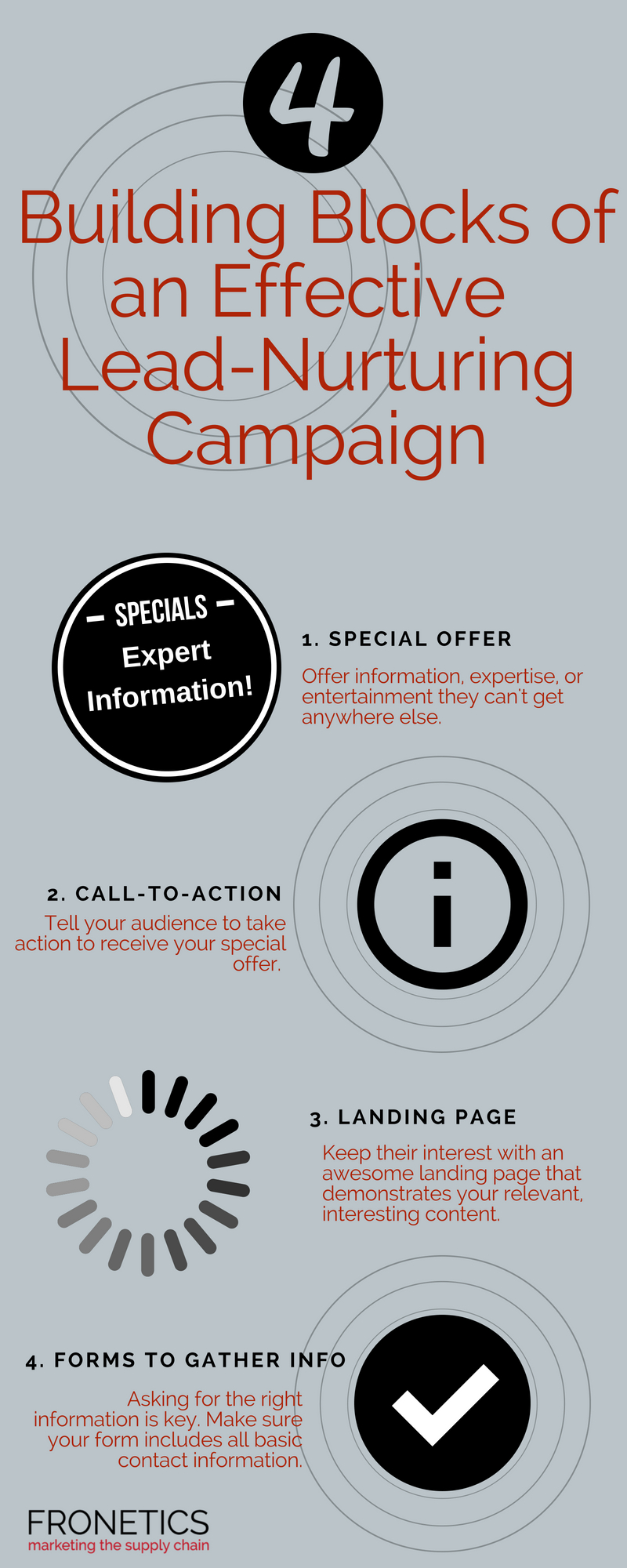
by Fronetics | Jul 31, 2018 | Blog, Content Marketing, Logistics, Marketing, Social Media, Supply Chain
Also in social media news July 2018: Instagram publishes a creator handbook with tips and tricks, YouTube features searchable hashtags, and Facebook debuts funded news shows.
Summer is half over and big box stores are already stocking their shelves with back to school supplies. While families are trying to sneak in their last trips before school, social media platforms are doing anything but going on a vacation.
LinkedIn, Facebook, Twitter, and Instagram are increasing updates and adding new features to keep their users happy while posting videos and pictures from their travels. But these updates and new features don’t just benefit personal users. Businesses are being positively impacted as well.
Social media platforms are continuing to add content kits, and even detailed guides, to help advertisers increase brand awareness and user reach. From paid spotlight ads to new creative tools, it’s becoming easier for companies to create interactive and engaging content with a few clicks on a computer.
[bctt tweet=”From paid spotlight ads to new creative tools, it’s becoming easier for companies to create interactive and engaging content with a few clicks on a computer.” username=”Fronetics”]
Here’s what’s been happening in July with your favorite social media platforms and how business are gaining more and more options for reaching new audiences.
Here’s your social media news for July 2018.
LinkedIn introduces new updates to LinkedIn Messenger
Along with some new updates to its news feed, LinkedIn made improvements this month to its messenger features. These features now include the ability to send attachments, incorporate images from screenshots, and start a group chat on the mobile version of LinkedIn messaging. LinkedIn says these updates will help professional conversations take on new formats — either more professional or more chat-like, depending on the needs of the user.
Facebook adds new creative tools for advertisers
Facebook introduced a new suite of creative tools for advertisers in its Ads Manager app that will make it easier for creators to build content from their mobile devices. Facebook writes, “These new creative tools allow you to create and edit ad images directly from the Ads Manager app, saving time and effort.” The suite also allows creators to fully customize ad templates and color filters to further branding opportunities for companies and improve the quality of ads within the app.
YouTube introduces searchable hashtags above video titles
YouTube has introduced a new way of displaying hashtags on its app — directly above the title of a video. Android Police states these hashtags are “clickable and will bring up a results page with other videos tagged with the same hashtag.” This new feature is currently only available in the U.S. but will give users greater access to video content by having hashtags prominently displayed above video titles.
Facebook debuts funded news shows
Anderson Cooper is headed to Facebook. On July 16, the social media platform debuted its first funded news show, including programming from ABC News, CNN, Fox News, and Univision. These programs will appear in a section of the Facebook Watch tab. “This section will feature news videos from national and local news Pages, and just like other sections in Watch, will be personalized based on the publishers you follow and what friends are watching,” writes Facebook’s blog.
Twitter testing promoted spotlight ads
Twitter is testing a new paid advertising option, Promoted Trend Spotlight Ads. These ads will allow advertisers to create a display banner at the top of the Explore feed for the first two times a user visits that day, before settling back into the Trends list. If approved, the new ad option will actually demote organic content pushing paid spotlight ads to the top of users’ feeds. Be on the lookout for the first trial ads coming from Disney in the new few weeks.
Facebook adds archive ability to Stories
Back in May, TechCrunch reported that Facebook was testing the ability to archive Stories, allowing users to save video clips after they expire to watch later or re-share on social media. Now other sources are reporting this update is becoming available to new users. Brands using Facebook Stories are particularly interested in this new feature, which would allow potential customers the ability to reference their content when making purchasing decisions.
Instagram publishes creator handbook
Questions about how to best promote your content on Instagram? Now we all have the answers. Instagram just published a 50-page Creator Handbook that covers tutorials, tips and tricks, suggested apps, and tools for creating and editing video. The guidebook, originally shared by Matt Navarra from the Next Web, will be extremely useful to brands looking to take their content to the next level, adding new features and editing capabilities.
Related posts:


by Jennifer Hart Yim | Jul 30, 2018 | Blog, Content Marketing, Logistics, Marketing, Supply Chain, Talent
A new article discusses the way that automation, AI and big data are transforming the industry. It raises the alarm that supply chain management will soon cease to exist, only to assert that it will still exist, just in a very different form.
This guest post comes to us from Argentus Supply Chain Recruiting, a boutique recruitment firm specializing in Supply Chain Management and Procurement.
A new article in Harvard Business Review has been generating some automation-related controversy in the Supply Chain Community, as well as lots of buzz and interesting conversation. Naturally, we at Argentus want to weigh in. Titled, “The Death of Supply Chain Management,” the article discusses the way that automation, AI and big data are transforming the industry. It raises the alarm that the function will soon cease to exist, only to – as these “X is dead“ articles often end up doing – assert that it will still exist, just in a very different form.
Beyond the obviously clickbait headline – which we couldn’t help but indulge in ourselves – the article makes some fascinating predictions about the future of supply chains. But even more relevant to us at Argentus, it has some interesting forecasts about the future of supply chain talent in particular, in the coming world where automation is king.
Automation is one of the hotter topics in the supply chain community – as it is across the entire economy. As a major feature in McKinsey discusses, automation has already made a number of jobs in the field way less relevant, threatening to eliminate those jobs entirely. Many companies have already automated their front-line transactional purchasing activities. Automation has eliminated a number of blue-collar supply chain jobs in warehouses and distribution centres, and driverless trucks stand to transform the logistics field, eliminating the need for millions of truck drivers.
But many are alarmed that automation will replace white-collar workers as well. The HBR article talks about how more companies are automating functions like demand forecasting, which has long been seen as more of an “art” than an exact science. No longer.
In the authors’ words, “within 5-10 years, the supply chain function may be obsolete, replaced by a smoothly running, self-regulating utility that optimally manages end-to-end workflows and requires very little human intervention.”
[bctt tweet=”Automation through digital technology isn’t really just about lowering labour costs, it’s about creating huge opportunities for companies to dive deep into data and create end-to-end visibility into their own supply chains.” username=”Fronetics”]
Automation through digital technology isn’t really just about lowering labour costs, it’s about creating huge opportunities for companies to dive deep into data and create end-to-end visibility into their own supply chains. This kind of visibility opens up huge opportunities, not only by lowering risk but also by letting companies become more strategic.
The HBR article outlines an interesting development: more retail and manufacturing companies are adopting “digital control towers” for their supply chains. These companies have physical rooms staffed with dozens of data analysts working in real-time to identify and squash challenges.
Picture an airport control tower, but for supply chain management: staffed 24/7, full of large screens full of 3d graphical representations of potential bottlenecks and inventory shortfalls all the way from order to delivery. These control towers are full of systems that can automatically correct for various issues, and they’re increasingly considered to be core aspects of company operations.
The authors outline how mining company Rio Tinto is using robotic train operators, cameras, lasers, and tracking sensors to monitor and fully automate its supply chain from train to port.
But do these developments hearld the end of the need for skilled Supply Chain professionals? Of course not.
A highly-automated “digital control tower” needs responsive individuals with deep understanding of how to solve Supply Chain challenges. An automated mining supply chain deep in the jungle, monitored in another country still needs people to monitor it and respond to issues.
Maybe unsurprisingly, the HBR article ends up saying that Supply Chain people will always be in demand, but that skill needs are changing, and we agree. People need to re-skill, up-skill, and educational institutions need to make sure that they’re training people with skills for the future and not the past. In the short term, executives who can manage people doing repetitive tasks (like transactional purchasing) need to learn how to manage information flows for more highly-specialized workers. Further down the ladder, the highest-demand analysts will be those who can draw insights from an ever-expanding pool of data and communicate them to senior leadership. Companies will need specialists with deep understanding of both technology and operations to design and implement automated supply chains – even more than they already do.
But beyond the trends that the HBR article outlines, we think they’re missing a key element: even if automation progresses to affect white-collar workers, even if data automates functions like supply planning, logistics, and sourcing, the human element will always matter. Companies will always need people who can build relationships with vendors when conducting large-scale Procurement. They’ll always need people who can negotiate contracts and rates, people who have the emotional intelligence to understand the psychology of the person sitting on the other end of the table, and arrive at a deal that drives value.
Machines will get better at the tactics, but the strategy will always be human, at least until the robots take over the world completely. (Which we don’t think will happen, by the way).
In the 19th century, luddites protested the adoption of machines in the British textile industry, fearing that they’d be out of a job. And they were. But while opportunities for weaving by hand disappeared, employment didn’t: the industrial revolution pushed new skillsets to the fore, creating a demand for people to manage production – leading to today’s supply chain function, by the way – while raising overall wealth and standard of living in the process.
While the rise of AI, big data and workplace automation has some important differences, we think it’s a worthwhile analogy: as with then, these new technologies will shift the employment landscape and put the squeeze on individuals with transactional or blue-collar skillsets. But supply chain professionals who can up-skill themselves, and become masters of the interpersonal skills that will never go away, will have more opportunities than ever before.
Take it from a company that’s on the front-lines of hiring in Supply Chain: while automation eliminates jobs at the lower-skilled end of the spectrum, demand for high-skilled candidates is higher than ever before, and only rising. So is Supply Chain Management on death’s door?
Not so fast.
Related posts:


by Fronetics | Jul 26, 2018 | Blog, Content Marketing, Logistics, Marketing, Social Media, Supply Chain
Social messaging apps have taken over the way consumers are interacting with brands. Their increasing popularity means your business needs to embrace this new trend.
No one can deny the reach of social networks. After all, Facebook has over 2 billion active users. But as marketers, we’re noticing that consumers are moving away from social networks and welcoming the popularity of messaging apps with open arms.
Social media is constantly changing, and every new app gives users a new way to engage with family, friends, and brands. With the shift toward messaging apps, your target audience is making the leap, so your business needs to as well.
Messaging apps have a strong appeal: personalized engagement. Brands are able to make a one-on-one connection with every potential customer that comes in contact with their app pages. This is an opportunity you cannot miss!
Companies reaping the messaging app benefits
Yoox Net-a-Porter, a UK-based ecommerce firm with U.S. operations, made the switch to messaging apps after the brand discovered that many of its customers preferred WhatsApp for product details and suggestions and purchases. WhatsApp easily integrated with its order management system and is currently being tested as the company’s shipping notification system.
“Realizing that consumers increasingly prefer to receive information via personal messaging services rather than email, we have been working with WhatsApp to improve the way we use the WhatsApp service with great results so far,” writes Yoox Net-a-Porter on its blog.
And Yoox Net-a-Porter isn’t the only brand making the switch. WhatsApp, a social messaging platform owned by Facebook, reported 1.5 billion active users and over 60 billion messages sent per day at the end of 2017. These numbers, continuing to grow at a staggering rate, make it hard to ignore that brands need to be investing their marketing time and dollars in messaging apps.
[bctt tweet=”WhatsApp, a social messaging platform owned by Facebook, reported 1.5 billion active users and over 60 billion messages sent per day at the end of 2017. ” username=”Fronetics”]
In our latest video, Kettie Laky, our social media director, discusses why social messaging apps are becoming so popular and the top four apps your brand should become familiar with.
Video: Top 4 social messaging apps your brand needs to be using
Takeaway
As with any new marketing effort, trial and error are a big part of the equation. In order to get the most from your time (and budget!), make sure you’re utilizing the best messaging app for your brand. Before committing to an app, ask these important questions:
- Who is my target audience?
- How will the app add value to my target audiences?
- How do I want to deliver my content?
- Do I want to use more than one app?
- How frequently will I be marketing on the app?
These questions can help you find the social messaging apps that will work best for your marketing campaign and start connecting with customers in a more personalized way. These apps making sharing valuable content easier than ever.
What social messaging apps has your business tried?
Related posts:


by Fronetics | Jul 25, 2018 | Blog, Content Marketing, Logistics, Marketing, Social Media, Strategy, Supply Chain
Here are 4 components of an effective lead-nurturing campaign that will entice your potential customers and have them moving down the sales funnel.
Your content marketing objectives really come down to one basic goal: to generate a high number of quality leads. These leads will help drive tomorrow’s revenue and increase sales. In fact, 85% of B2B marketers say lead generation is their most important content marketing goal.
[bctt tweet=” 85% of B2B marketers say lead generation is their most important content marketing goal.” username=”Fronetics”]
As more and more buyers discover brands before they are ready to purchase, an essential function of any marketing department is lead nurturing. That is, moving leads through the sales funnel by leveraging what’s known about their needs and online behavior.
Marketo, a marketing software company, describes lead nurturing as being “personalized, adaptive, and able to listen and react to buyer behavior in real time.”
We know that marketers need to focus their lead nurturing strategy on multi-channel engagement. This includes utilizing email, social media, blogs, and video to interact with potential customers. A multi-channel lead nurturing strategy is essential for companies looking to optimize their user experience and bring in high-quality leads.
With so many variables contributing to a productive lead-generation campaign, it can be challenging to pinpoint what differentiates a successful campaign from a mediocre one. Here are four tools that will help you deliver a series of targeted messages across multiple touch points and platforms to help solidify your lead-nurturing strategy and increase your quality leads.
4 building blocks of an effective lead-nurturing campaign

(Made with Canva)
Takeaway
Successful lead nurturing is really about utilizing all the tools at your disposal to meaningfully connect with your leads in order to build trust and establish credibility. Using these four key points, marketers can start building on their lead-generation efforts as they guide potential customers on their journey to becoming a client.
And don’t forget: Asking for the right information is key! If you want to nurture high-quality leads, you need to make sure you’re capturing relevant, helpful information along the sales journey.
Related posts:


by Elizabeth Hines | Jul 24, 2018 | Blog, Current Events, Data/Analytics, Internet of Things, Logistics, Manufacturing & Distribution, Supply Chain
Automation in manufacturing can help create more, better paying jobs. But two leading economists have examined real-world data and concluded that the robots may be winning after all. Is it true?
Last year I wrote about artificial intelligence (AI) and the potential loss of American jobs. At the time, I thought; “Yes, people will lose jobs — that is inevitable. Automation, however, will create many more.”
Automation would create leaner, more efficient operations. Efficiency facilitates new market opportunities and business growth, which in turn would allow for expansion and job creation.
It felt like a good argument! And I wasn’t alone. If one looks at media coverage from last year, one can find plenty of references to “beating the robots.”
There was a palpable feeling, an energizing hope, that automation would, in fact, ultimately create more, better paying jobs. And these new jobs wouldn’t be the low-skill positions of their pre-automation predecessors, but rather higher-paying opportunities operating new technology and supervising automated processes.
In a paper last year, two of the most respected researchers on the subject said it was likely that increased automation would create new, better jobs, so employment and wages would eventually return to their previous levels.
It all seemed positive.
This year’s news
But wait. The same researchers — Daron Acemoglu of M.I.T. and Pascual Restrepo of Boston University — published an updated study that has gained a tremendous amount of attention. It was covered in-depth by the New York Times, with the title: Evidence That Robots are Winning the Race for American Jobs.
Sadly, their study appeared to be the first “to quantify large, direct, negative effects of robots.”
In referencing the difference in prognosis from last year to this year, the NYT article noted that the older paper was “a conceptual exercise” and the new study “uses real-world data — and suggests a more pessimistic future.”
I thought, I’m going to have to write a new article. It was tentatively titled, “I Take It Back: The Data Says the Robots May Be Winning.”
But as I sat down to write, something just didn’t add up. How did all this jive with the latest employment news? Only days ago, unemployment rates hit 3.9%, a rare low, mimicking rates we haven’t seen since 2000.
Taking in the whole picture
As I looked further into the study, I found that it covered 1990-2007, a lengthy but rather unique time in our economic history. The years from 1990 to 2007 saw a dotcom boom and burst. (Just for reference, unemployment rates rose sharply in 2009 and 2010, but have been on a steady decline since then.)
The robot vs. man study said that robots were to blame for up to 670,000 lost manufacturing jobs between 1990 and 2007. I’m not arguing with the study.
But they then go on to conclude the following: The numbers will rise because industrial robots are expected to quadruple. And from where I sit in 2018, I simply don’t see the facts to support that assumption.
Let’s look at manufacturing specifically. Are machines and automation blowing up the manufacturing sector? Well, yes and no.
Certainly manufacturing jobs have had a sharp decline over the last 20 years; that’s undeniable.
But since 2000, their percentage of the overall job market has held generally stable between 8 and 9%. And current employment statistics for 2018 show increases in the manufacturing sector.
Now, I’m not suggesting manufacturing jobs are “roaring back” by any stretch. But a positive trend line is … well … positive. The prognosis of a “pessimistic future” just doesn’t seem widely supported yet by the facts. Time, as always, will tell.
Of course, economists warn that employment rates aren’t the whole picture. While they may mimic that of 2000, they warn that the economy isn’t the same and that it is concerning that wages have been slow to rise even though unemployment has fallen.
From what I see now, however, I still feel optimistic that AI and automation will create leaner, more efficient operations that will, in turn, create new (even if different) jobs. To me, it still looks like the ones winning from the increasing technological advances in the manufacturing industry are, in fact, we humans.
This post originally appeared on EBN Online.
Related posts:


by Fronetics | Jul 23, 2018 | Blog, Content Marketing, Logistics, Marketing, Social Media, Strategy, Supply Chain
Part four in our series on effective lead generation walks you through how to create a form that converts leads, getting you the information you need without driving prospects away.
Welcome to the last installment of our series on effective lead generation and nurturing. Now that you know how to:
- Create and package a valuable offer
- Add calls-to-action that work
- Design a landing page that converts
So, what’s next? The final step in the lead generation process, and one that’s too often overlooked and undervalued, is designing a form that gets you the information you need.
It’s all in your form
When prospects get to your landing page, they’ve indicated that they’re interested in your offer. Ideally, what they find on your landing page has reaffirmed their interest. Now it’s time for them to provide you with what you’re looking for in return for the value you’re offering them: their contact information.
The information you glean from your prospects will feed into your Customer Relationship Management (CRM) or other lead management database. This means that you should essentially be retrofitting your form based on your email segmentation criteria. In other words, you want to get just the right information from your prospects that will allow you to tailor your lead nurturing to best suit their needs and interests.
[bctt tweet=”An effective form strikes the delicate balance between acquiring all the necessary information and keeping the willingness and attention of your visitors.” username=”Fronetics”]
Your head might be filling with visions of long and comprehensive questionnaires — not so fast. If you make your form too long or involved, prospects will abandon it out of impatience and frustration, or feel that you are exploiting them for more time or information than they’re willing to provide. An effective form strikes the delicate balance between acquiring all the necessary information and keeping the willingness and attention of your visitors.
3 characteristics of forms that convert leads
For this last and crucial step in your lead generation strategy, it’s all about capturing leads. So, what makes for an effective form?
1. Find the length that works for you.
Conventional wisdom would have you believe that the shorter your form the more leads you’ll get, whereas the longer the form, the better quality (though fewer) leads you’ll get. But that’s a bit of a simplistic and defeatist way of looking at it.
We think you can have your cake and eat it, too. The key is to design your form with your email segmentation criteria in mind.
Ask as few questions beyond the basics as possible to get you precisely the information you need. Your goal is richness of information, as opposed to lengthy, detailed questions. For more, check out HubSpot’s guide to creating a form.
2. Don’t frighten them away.
It may seem counterintuitive, but you should avoid using the word “submit” on your form. Nobody likes the idea of “submitting” their information.
Instead, use a phrase that demonstrates that your prospect is about to get something that they want by supplying their information. For example, “Get it free,” or, “Download now,” emphasizes what the prospect will receive, rather than what they will be giving.
3. Protect their privacy.
In the current climate, we’re all thinking more and more about how our data gets collected and shared. Make sure your prospects know that you’ll be a good steward of the information they provide you.
Add a privacy message or link to your privacy policy, indicating that their email or contact information won’t be shared or sold.
Creating forms that convert leads is the final step — though one of the most crucial — in effectively turning website visitors into prospects. If you can manage to create a valuable offer, entice visitors with a call-to-action, convince them to convert on a landing page, then present a form that encourages them to complete it (rather than drives them away), then you’ve done your job as a marketer.
Related posts:











